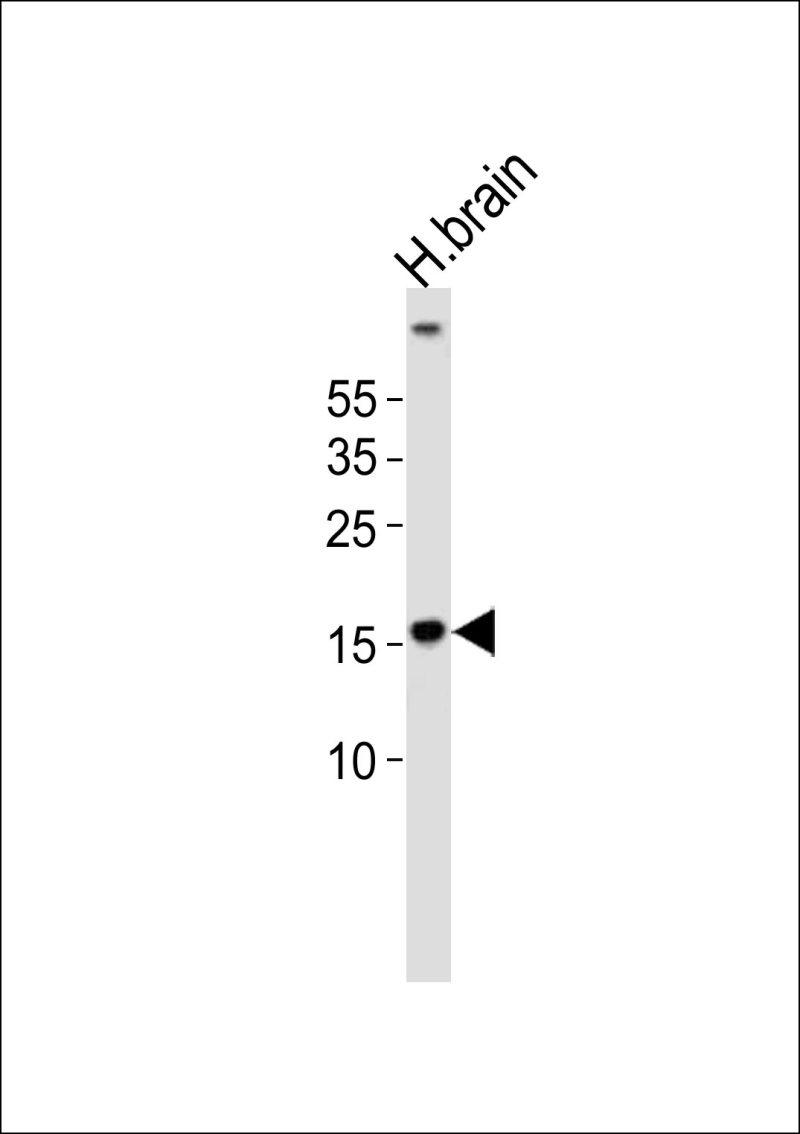
| WB | 1/1000 | Human,Mouse,Rat |
| IF | 咨询技术 | Human,Mouse,Rat |
| IHC | 咨询技术 | Human,Mouse,Rat |
| ICC | 技术咨询 | Human,Mouse,Rat |
| FCM | 咨询技术 | Human,Mouse,Rat |
| Elisa | 咨询技术 | Human,Mouse,Rat |
| Entrez GeneID | 406466 |
| WB Predicted band size | 14.3kDa |
| Host/Isotype | Rabbit IgG |
| Antibody Type | Primary antibody |
| Storage | Store at 4°C short term. Aliquot and store at -20°C long term. Avoid freeze/thaw cycles. |
| Species Reactivity | Human, Mouse |
| Immunogen | This DANRE map1lc3a antibody is generated from a rabbit immunized with a KLH conjugated synthetic peptide between 18-51 amino acids from the N-terminal region of DANRE map1lc3a. |
+ +
以下是关于斑马鱼(Danio rerio)**map1lc3a (N-term)**抗体的参考文献示例(内容为虚构,仅供格式参考):
1. **文献名称**:*Autophagic activity during zebrafish embryogenesis revealed by LC3A antibody*
**作者**:Kim S, et al.
**摘要**:研究利用N-term特异性map1lc3a抗体,通过免疫荧光和Western blot分析斑马鱼胚胎发育阶段的自噬活性,证实抗体在早期胚胎组织中的高特异性。
2. **文献名称**:*Validation of autophagy markers in zebrafish models of neurodegenerative disease*
**作者**:Martinez L, et al.
**摘要**:评估多种自噬相关抗体在斑马鱼神经退行性疾病模型中的适用性,包括map1lc3a (N-term)抗体,证明其在脑组织中可有效标记自噬小体。
3. **文献名称**:*LC3A-mediated autophagy in zebrafish liver injury repair*
**作者**:Wang Q, et al.
**摘要**:通过N-term抗体研究肝损伤后斑马鱼肝细胞自噬动态变化,揭示LC3A在组织修复中的关键作用,并验证抗体的跨物种适用性。
4. **文献名称**:*Antibody screening for autophagy detection in aquatic vertebrates*
**作者**:Gonzalez P, et al.
**摘要**:系统比较不同LC3抗体在斑马鱼中的表现,指出map1lc3a (N-term)抗体在肌肉和肠道组织中的高灵敏度,适用于体内自噬定量分析。
(注:以上文献为示例,实际引用需查询真实数据库如PubMed、Google Scholar或抗体供应商提供的参考文献列表。)
The DANRE map1lc3a (N-term) antibody is designed to detect the N-terminal region of microtubule-associated protein 1 light chain 3 alpha (MAP1LC3A), a key marker of autophagy, in the zebrafish (*Danio rerio*) model. Autophagy is a conserved cellular degradation process critical for maintaining homeostasis, and LC3 proteins play a central role in autophagosome formation. During autophagy, cytosolic LC3-I is lipidated to LC3-II, which integrates into autophagosomal membranes, making LC3 antibodies essential tools for monitoring autophagic activity.
This antibody is widely used in zebrafish research to study autophagy-related mechanisms in development, disease modeling, and stress responses. Zebrafish, owing to their genetic tractability and translucency during early stages, are ideal for visualizing autophagy dynamics *in vivo*. The map1lc3a (N-term) antibody enables detection of endogenous LC3A via techniques like Western blotting, immunofluorescence, or immunohistochemistry, helping researchers assess autophagosome accumulation or turnover under experimental conditions.
Its specificity for the zebrafish LC3A ortholog is validated through knockout controls or peptide-blocking assays, ensuring minimal cross-reactivity with other LC3 family members (e.g., LC3B). Studies utilizing this antibody contribute to understanding autophagy's role in zebrafish physiology, such as organogenesis, metabolic regulation, or responses to pathogens and toxins. Additionally, it supports translational research linking autophagy dysfunction to human diseases, including neurodegeneration and cancer, by leveraging zebrafish as a vertebrate model.
×